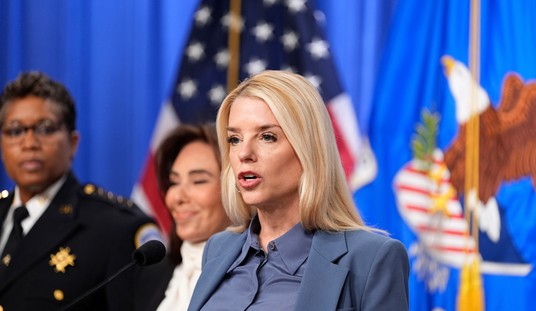You knew it was coming. The beautiful mountainside in South Dakota handcrafted into a tribute to four of America's most legendary presidents, where visitors come from all around the world to gaze in astonishment over the patriotic homage to four leaders who undeniably shaped the development of the United States into the tour de force that it is today -- the New York Times wants it gone.
The Times hates anything that casts America in a positive light. It's important to The Times that America be remembered only for its sins, no matter if those sins were commonplace throughout much of the world at the time or also committed by the same people America is said to have victimized. For example, The Times complains that the land upon which Mount Rushmore sits was taken from the Lakota Tribe of Native Americans, but the Lakota took it from the Cheyenne Tribe – and who knows who they took it from.
Another reason The Times wants the monument gone is because the sculptor had previously worked on a confederate sculpture in Georgia. The Times was able to trace down the sculptor's ties to the Ku Klux Klan.
(Via The New York Times)
Native Americans have long criticized the sculpture, in part because it was built on what had been Indigenous land. And more recently, amid a nationwide movement against racism that has toppled statues commemorating Confederate generals and other historical figures, some activists have called for Mount Rushmore to close.
...
Before he was recruited to create Mount Rushmore, Mr. Borglum had been involved with another project: an enormous bas-relief at Stone Mountain in Georgia that memorialized Confederate leaders.
It was eventually completed without him, but Mr. Borglum formed strong bonds with leaders of the Ku Klux Klan and participated in their meetings, in part to secure funding for the Stone Mountain project. He also espoused white supremacist and anti-Semitic ideas, according to excerpts from his letters included in “Great White Fathers,” a book by the writer John Taliaferro about the history of Mount Rushmore.
Of course, The Times also has a problem with the presidents who are carved on the mountain. If it were up to The Times, the monument would just feature four faces of Barrack Obama.
Recommended
Mr. Borglum chose Washington, Jefferson, Lincoln and Roosevelt, he said, because they embodied “the founding, expansion, preservation and unification of the United States.”
But each of these titans of American history has a complicated legacy. Washington and Jefferson were slaveholders. Roosevelt actively sought to Christianize and uproot Native Americans as the United States expanded, Professor Smith said. “He was a racist,” he added.
“I don’t go so far as to think that the only good Indian is the dead Indian, but I believe nine out of every 10 are,” Roosevelt said in an 1886 speech. “And I shouldn’t like to inquire too closely into the case of the 10th.”
And although Lincoln was behind the Emancipation Proclamation — a move some have characterized as reluctant and late — he has been criticized for his response to the so-called Minnesota Uprising, in which more than 300 Native Americans were sentenced to death by a military court after being accused of attacking white settlers in 1862.
Luckily, the mountain appears safe from the cancel culture mob for now. On Friday, President Trump will attend a Fourth of July celebration at Mount Rushmore, which is part of the reason The Times is now doing its best to associate the monument with racism. And South Dakota Republican Gov. Kristi Noem has also vowed to protect the monument from the left so long as she's the governor of the state.


